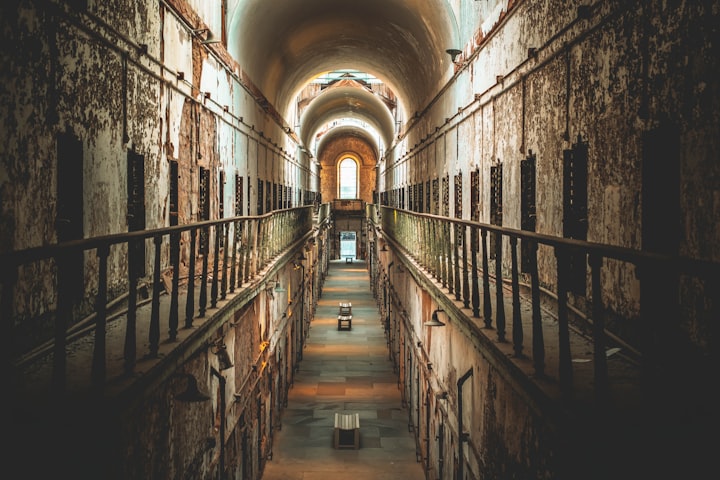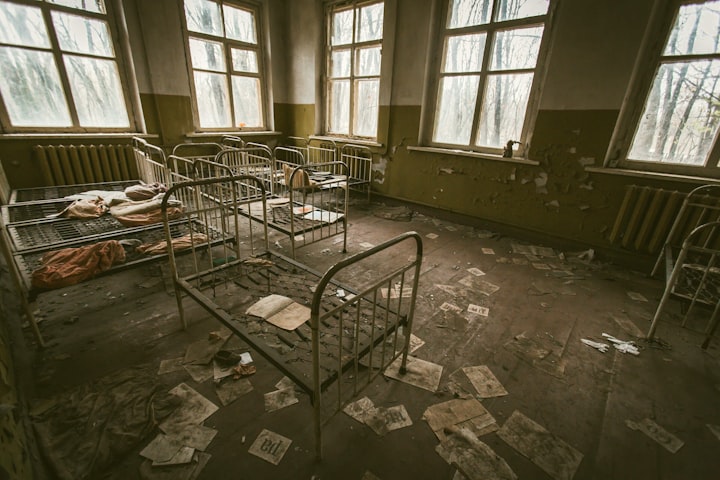10 Creepy Abandoned Jails in Europe PT.1
Behind Bars: Discovering the Haunting Abandoned Jails of Europe - 5 Sites of Fascinating History and Eerie Mystery

Abandoned buildings can be spooky in general, but abandoned jails are downright terrifying.
Even if you aren’t a superstitious person, just being in these places can be unnerving, knowing the horrible things that might have occurred while they were still operational. Histories of poor living conditions, torture, and murder make these places particularly unnerving.Here are 10 of the creepiest abandoned jails in Europe.
1 0. Isle of Procida Prison
This Italian prison lies on the island of Procida, high atop a cliff. In fact, it has some of the best views of the Bay of Naples available on the island. As a former place, this is something you’d expect—as a prison, not so much. But when it housed prisoners, the views weren’t enough to make up for the horrid conditions. Thirty to forty men shared a “cell.” To make matters worse, they also shared a bathroom… Well, more like a bucket that was passed around once a day. There were up to 600 prisoners, with nearly as many guards and police (500).It served as a prison—a Russian gulag with better weather, one might say—between 1830 and 1988. This former king’s palace imprisoned some of the mafia’s worse criminals and even some of the fascists under Mussolini in the 1930s. In the 1970s and 1980s, it was the “home” to numerous members of the Camorra crime syndicate, including Raffael “The Professor” Cutolo, Frank Mannino, and Gigino “The King” Giuliano. Though they were locked up, Giuliano recruited other prisoners to do work for him on the outside once they were released.
In decay since it closed in 1988, the jail is now crumbling, and what once was a palace of the ruling Bourbons now contains only empty, echoing hallways. You can tour the prison today but must make arrangements in advance. You won’t have a hard time feeling the despair of the prisoners crammed in a small room with a single window looking out at the clear, blue sky. So close, yet so far.
9. Spac Prison
Spac prison is one of the oldest and most beautiful of Europe’s abandoned prisons. It was a political prison in Albania during the Soviet era.) The prison has been abandoned for almost 30 years, but the walls still bear evidence of the horrors that took place—prisoners have carved their names, pictures, and lines into the surfaces.
The rapidly deteriorating property was supposed to be converted into a museum. However, no move from the government to declare it a museum has happened. Until that time, it will remain at risk of further deterioration. The prison was named as one of the 50 most endangered sites in the world in 2015 by the New York-based World Monument Fund, which should hopefully draw some more attention to funding its revival.Visitors to Spac must be careful, though, as the prison is mountainous, and the road to it is not very safe after dark. You should also wear sturdy shoes to navigate the steep mountain terrain.
8. Goli Otok
When the Soviet Union and Iron Curtain came down, this prison was left to rot. The rocky island outcrop known as Goli Otok is now home to a collection of abandoned buildings. It is sometimes called the “Croatian Alcatraz” due to the similarities of their island locations and very high-security measures.Russian prisoners of war from the Eastern Front were sent to Goli Otok throughout World War I. When the first prisoners arrived, the island was bare and barren.
Prisoners were forced to build shelters and settlements. The People’s Federal Republic of Yugoslavia formally declared the entire island a high-security, top-secret prison and labor camp in 1949, along with the neighboring Sveti Grgur island, which housed a women’s prison. The prison operated until 1989.Prisoners were forced into hard labor regardless of weather conditions, which could reach as high as 104°F (40°C) and down into freezing temperatures in the winter. The prison was run by the inmates themselves, so it operated under a hierarchical system of violence and humiliation. Around 16,000 political prisoners served their sentences there in total; of these, 400 to 600 of them perished on the island.
Since its closure in 1989, it has been left to ruin, and shepherds from Rab moved onto the island to graze their sheep. More recently, it has become a tourist attraction.
7 . Patarei Prison
Located in Tallinn, Estonia, Patarei prison is a ghostly and mysterious place. It has not operated for more than a decade, but artists and former prison employees have been using its cells for art shows and small exhibitions. The walls are covered with graffiti, which seems very appropriate. But it’s not easy to explore this haunted place, especially when you’re alone.
The fact that Patarei has housed death row inmates throughout history and that executions have also taken place there have added to the prison’s infamous image.
The prison was originally a sea fortress built in the 1800s to protect the sailing routes of the Russian empire. It was converted into a prison in 1919 and eventually incarcerated around 500 prisoners. Many were purged during the 1940s, as the prison was overcrowded and filthy. The capacity of prisoners at Patarei was 1,200, yet by October 1941, the total of inmates was 2,600. By March 10, 1945, the number of inmates was 3,620. After the war, the Soviets emptied the prison and sent the inmates to the gulags in the east.
6 . Rummu Prison
The Rummu Prison was built in the late 1930s in a limestone quarry. When the Soviet Union collapsed, it was abandoned. The area flooded, and now the prison is a partially submerged island of crumbling brick walls.
After the Soviets left Estonia in 1991, they closed down the country’s Soviet-era institutions. This included the labor prison at Rummu. When pumping stopped, the prison was abandoned. The quarry eventually filled with groundwater.
Visitors can now explore the underwater prison by taking a boat tour or diving through the ruins. Visitors can view the prison walls, used machinery, and buildings from below, creating a mystical, surreal scene. Access is very difficult, and it can be dangerous. Many tourists like to jump into the lake off the ruined buildings of the prison, and warning signs have been put up to make people wary of the underwater dangers. Pieces of metal, machinery, barbed wire, rebar spikes, and crumbling concrete lurk under the water’s surface. In August 2014, a teenage girl hurt her back jumping off one of the ruined buildings, and in July 2016, a man was found drowned in the lake.






Comments
There are no comments for this story
Be the first to respond and start the conversation.